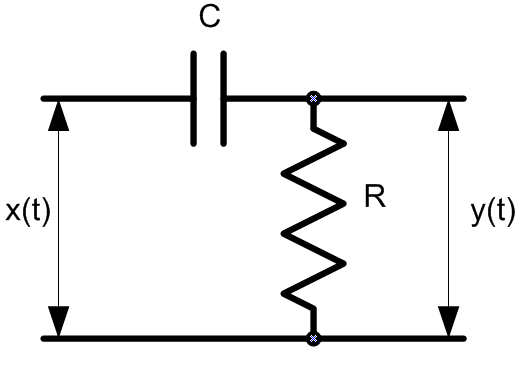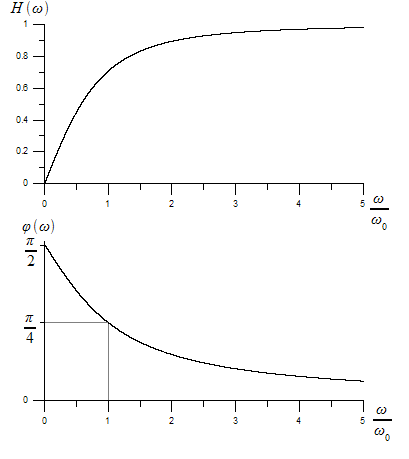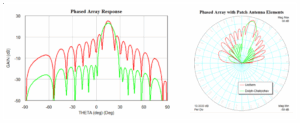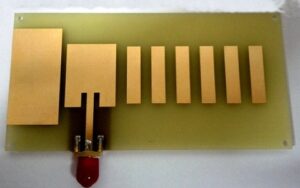Table of Contents
Cut-off frequency
The width of a waveguide is 2 cm, according to the cutoff frequency formula fc=c2af_c = \frac{c}{2a}fc=2ac, where ccc is the speed of light (about 3×1083 \times 10^83×108 m/s), A cutoff frequency of about 7.5 gigahertz (GHz) can be calculated. In other words, any signal with a frequency lower than 7.5 GHz cannot travel through the waveguide.
Terrestrial radio frequency interference needs to be filtered out in ground and satellite communication links, and by designing rectangular waveguides with cutoff frequencies higher than 1 GHz, the propagation of these low-frequency signals can be naturally prevented, ensuring the clear and accurate communication signals.
The rectangular waveguide used by the radar system is set to be 3 cm wide and its cutoff frequency will be 5 GHz. This design allows all stray signals below 5 GHz to be effectively blocked, while only radar signals above this frequency can pass through.
Measurement equipment in the laboratory often requires extremely high signal purity, and setting the waveguide width to 1.5 cm and the cutoff frequency to 10 GHz ensures that only high frequency signals above 10 GHz are captured and processed.

Wave propagation mode
The most common mode of propagation is the TE₁₀ mode (transverse electric mode), which is the lowest order and the most easily excited. In the TE₁₀ mode, the electric field distribution has a single crest and trough parallel to the direction of the wide edge of the waveguide. If the width of the waveguide is 2 cm, its cutoff frequency is 7.5 GHz.
For higher order TE₂₀ mode, the electric field distribution is more complex, with two peaks and two troughs. The cut-off frequency for the TE₂₀ mode is twice that for the TE₁₀ mode (i.e. if the TE₁₀ mode has a cut-off frequency of 7.5 GHz, the frequency for the TE₂₀ mode is 15 GHz).
The TM (transverse magnetic) mode can also propagate in a rectangular waveguide, where the magnetic field rather than the electric field is distributed along the width of the waveguide. The TM₁₁ mode is similar in electric field distribution to the TE mode, but has a higher cutoff frequency than the corresponding TE mode. If the TE₁₀ mode has a cutoff frequency of 7.5 GHz, the TM₁₁ mode may have a cutoff frequency approaching or exceeding 10 GHz.

Field configuration
In the basic TE₁₀ mode, the electric field is mainly distributed along the width of the waveguide, while at higher than the cutoff frequency (e.g., above 7.5 GHz), the electric field components are able to effectively propagate along the waveguide. If the width of the rectangular waveguide is 2 cm, according to the cutoff frequency formula fc=c2af_c = \frac{c}{2a}fc=2ac, we can get a cutoff frequency of about 7.5 GHz. Above this frequency, the electric field is evenly distributed in the waveguide, allowing high frequency signals to pass through smoothly. Signals below this frequency decay rapidly after entering the waveguide, because the electric field does not form a stable mode of propagation.
In the more complex TE₂₀ mode, the electric field has two peaks and two valleys, and this mode has twice the cutoff frequency of the TE₁₀ mode, which is 15 GHz. In TE mode, when the operating frequency is increased to more than 10 GHz, this distribution of the magnetic field helps to maintain stable wave propagation in the waveguide, improving the transmission quality of the signal and the overall performance of the system.
Waveguide geometry
If the width of the rectangular waveguide is 2 cm, use the formula fc=c2af_c = \frac{c}{2a}fc=2ac, the cutoff frequency is about 7.5 GHz, and all signals higher than 7.5 GHz can pass. Signals below this frequency are blocked. In addition to the basic TE₁₀ mode, there are several higher-order TE and TM modes in rectangular waveguides. If the height of the waveguide is halved, the corresponding cutoff frequency will increase.
A waveguide with a large width/height ratio tends to support broadband transmission at a low cutoff frequency, and a waveguide with a width of 4 cm and a height of 1 cm has an aspect ratio of 4:1. Such a waveguide can work at a lower cutoff frequency (about 3.75 GHz) and is suitable for broadband communication.
Precision measurement or special communication systems require adjustment of the specific dimensions of the waveguide to optimize transmission performance at a particular frequency. Adjusting the dimension of the waveguide not only affects the cutoff frequency, but also changes the mode distribution inside the waveguide, and in satellite communication, in order to match specific upstream and downstream bands, it is necessary to design a specific size of the waveguide to ensure efficient signal transmission and minimum signal loss.







